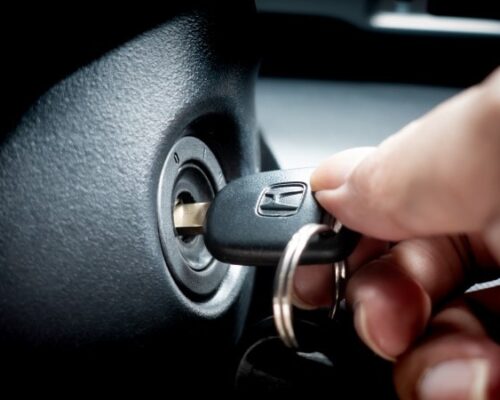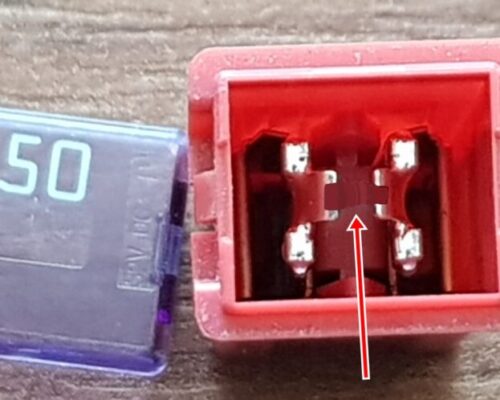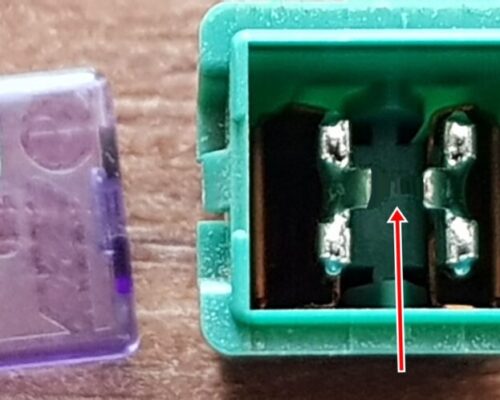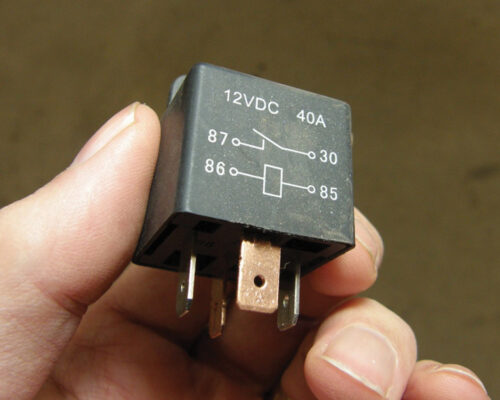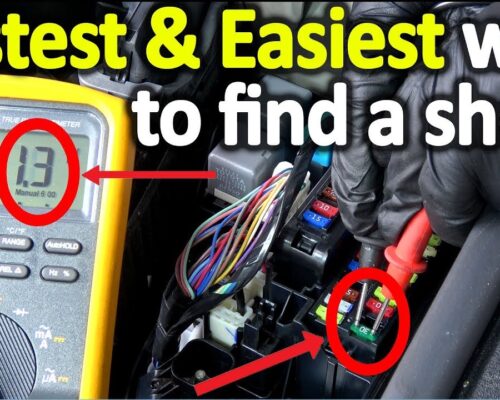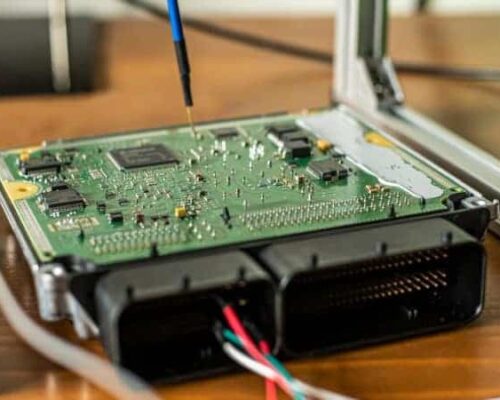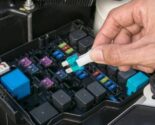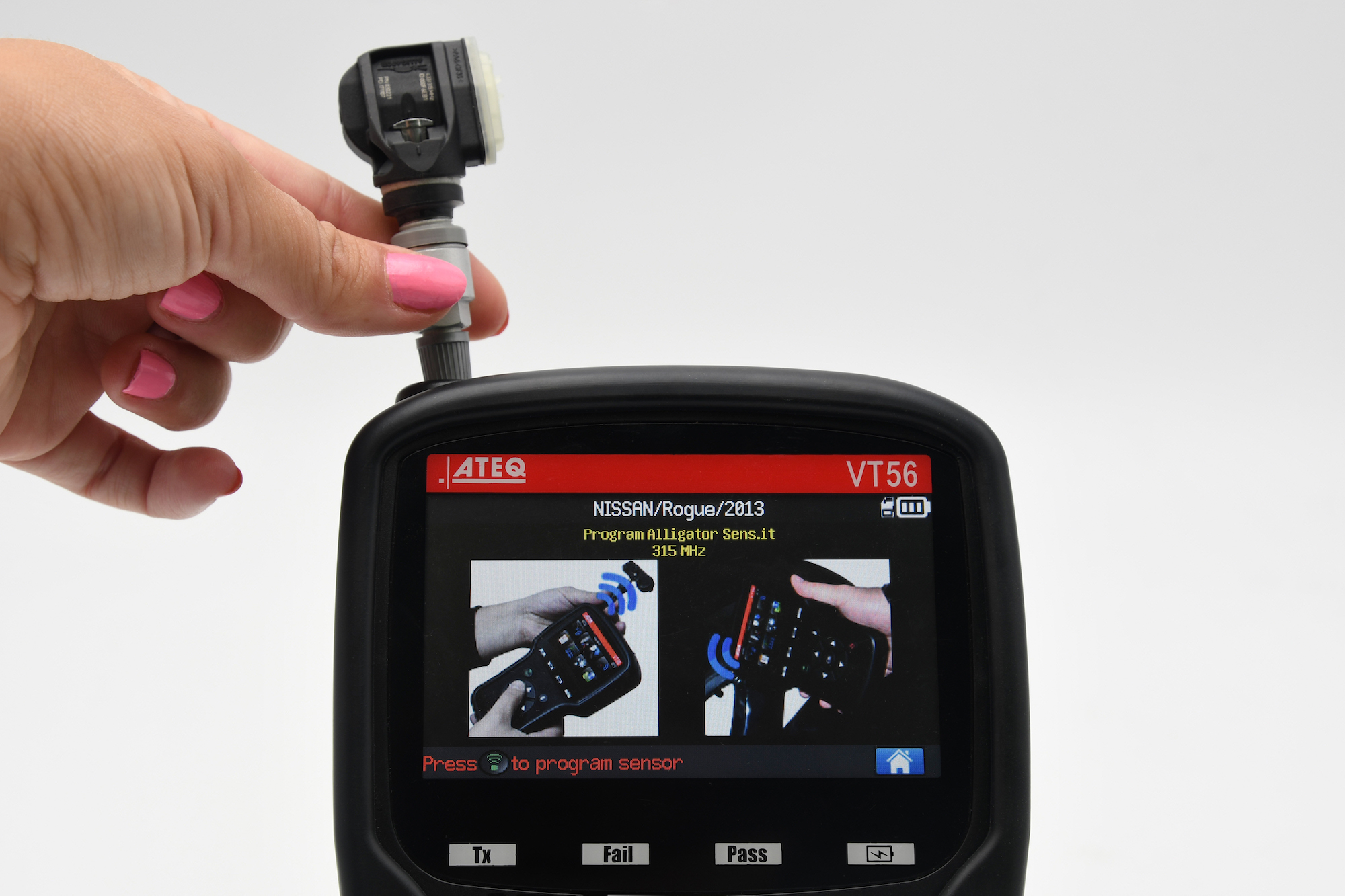
How To Program Tpms Sensors?
The Tire Pressure Monitoring System (TPMS) is an electronic system that monitors the air pressure inside the tires of a vehicle. The TPMS sensors are located in each wheel and measure the tire pressure. If the pressure in one or more tires is below the recommended level, the TPMS will warn the driver with a warning light on the dashboard.
The TPMS can also be programmed to provide different warnings for different vehicles, depending on the make and model.
- In order to program TPMS sensors, you will need a TPMS relearn tool
- Once you have the relearn tool, follow the instructions that come with it in order to properly connect it to the vehicle’s OBD-II port
- After the relearn tool is properly connected, turn on the ignition but do not start the engine
- The relearn tool will then prompt you to enter the specific sensor ID for each tire position
- You can typically find these IDs printed on the side of each sensor
- Enter the sensor IDs as prompted and then wait for the relearn process to be completed
- This usually takes just a few minutes
How To Replace Or Reprogram A New TPMS Sensor
Can You Program Your Own Tpms Sensor?
Yes, you can program your own TPMS sensor, but it’s not as simple as just downloading a app or software. You’ll need to have some basic knowledge of electronic programming and soldering. Plus, you’ll need to purchase the correct tools and components to interface with the sensor.
For these reasons, we recommend that you consult with a professional automotive technician before attempting to program your own TPMS sensor.
How Do I Program My Tpms on My Car?
Assuming you would like a blog post discussing how to program a TPMS in a car:
“How do I program my TPMS on my car?”
If your car is equipped with tire pressure monitoring system (TPMS), you’ll need to know how to program it.
Depending on the make and model of your vehicle, the process may vary slightly. But in general, here’s what you need to do:
First, find the reset button for the TPMS.
It’s usually located on the dash or near the steering wheel. Once you’ve found it, press and hold the button for about 20 seconds or until you see the light on the dash turn off and then back on again. This indicates that the system has been reset and is now ready to be programmed.
Next, drive your car around for a bit- at least 15 minutes- so that the system can read all of the tire pressures. After this time has elapsed, check all four tires to ensure that they are properly inflated according to their psi rating (you can find this information in your owner’s manual).
Now it’s time to start programming!
With all four tires at their proper psi levels, begin driving around slowly- no faster than 20 mph. The system will automatically register each tire pressure as you drive past 25 mph. After about 5 minutes of driving at this speed, stop and check each tire again to make sure that they are still properly inflated; if not, add or release air as needed until they are.
And that’s it! You’ve now successfully programmed your TPMS!
How Do I Program Tpms Without Tool?
If your vehicle is equipped with Tire Pressure Monitoring System (TPMS), you will need a TPMS tool to make sure the system is working properly. Without the tool, you will not be able to program the system and it will not be able to accurately monitor the tire pressure.
How Much Does It Cost to Program a Tpms Sensor?
Programming a TPMS sensor can vary in cost depending on the make and model of your vehicle. Many newer vehicles have sensors that are already programmed when you purchase them, however if you need to replace a sensor or have a new one installed, the price can range from $50-$200. The average cost to program a TPMS sensor is around $100.

Credit: www.youtube.com
How to Activate New Tpms Sensor Without Tool
If your car is equipped with a Tire Pressure Monitoring System (TPMS), you will need to know how to activate the new sensor when you replace a tire. The process is simple and does not require any special tools.
1. Start by putting the key in the ignition and turning it to the “on” position.
Do not start the engine.
2. Locate the TPMS reset button, which is usually located on the dash near the steering wheel.
3. Press and hold the TPMS reset button for about five seconds or until you see a message on the dash confirming that the system has been reset.
4. You can now start your engine and drive as normal. The new sensor will begin working immediately and will provide accurate tire pressure readings from that point forward.
How to Program New Tpms Sensors Toyota
If your Toyota has a tire pressure monitoring system (TPMS), you’ll need to know how to program new TPMS sensors when you replace a flat tire. Here’s a step-by-step guide:
1. Start with the car parked on level ground and the engine off.
2. Use a tire gauge to check the air pressure in all of your tires, including the spare. Adjust any that are low.
3. Find the TPMS reset button, which is usually located under the dash near the steering wheel.
4. Press and hold the reset button for about five seconds until you hear a beep or see a light flash on the dash indicating that the system has been reset.
5. Remove the old sensor from the tire and install the new one according to manufacturer’s instructions (usually just screwing it into place). Make sure it’s tight so it doesn’t come loose while driving.
6. Drive around for a few miles so that each sensor can transmit its signal to the receiver/monitor unit in your car (this may take up to 20 minutes).
How to Program Tpms Sensors Nissan
If your Nissan is equipped with Tire Pressure Monitoring System (TPMS) sensors, you may need to know how to program them. Here’s a quick guide on how to do just that:
1. Start by placing the key in the ignition and turning it to the “On” position without starting the engine.
2. Press and release the trip odometer reset button until “learning mode” or an equivalent message appears on the vehicle information display.
3. Drive slowly forward while keeping an eye on the vehicle information display. The system will automatically learn and store the location of each sensor as you drive past them.
4. Once all four sensors have been learned, a confirmation message will appear on the display. At this point, you can exit learning mode by pressing and holding the trip odometer reset button for more than five seconds or simply turn off the ignition key.
How to Program Tpms Sensors Ford
If you have a Ford car with tire pressure monitoring system (TPMS) sensors, you may be wondering how to program them. Luckily, it’s a pretty easy process that only takes a few minutes. Here’s what you need to do:
1. Start by ensuring that your car is turned off and the tires are at their correct pressure levels.
2. Locate the TPMS reset button, which is usually located near the steering wheel on the dash or center console.
3. Press and hold the reset button for approximately 5 seconds until the light on the button starts blinking rapidly.
4. Now start your car and drive around for about 15 minutes so that the sensors can relearn their new positions and pressures.
That’s all there is to it! After following these steps, your TPMS sensors should be properly programmed and working as intended.
How to Program Tpms Sensors Bmw
If you have a BMW, you may be wondering how to program TPMS sensors. Here’s a quick guide on how to do it:
1. Start by ensuring that the car is turned off and the key is out of the ignition.
2. Locate the TPMS sensor on each tire. The sensor is usually located near the valve stem.
3. Use a TPMS relearn tool to activate each sensor in turn.
Follow the instructions that come with your relearn tool for specific details on how to do this.
4. Once all four sensors have been activated, start the car and drive around for about 15 minutes so that the system can complete its self-calibration process.
How to Program Tpms Sensors With Autel
As the popularity of vehicles equipped with tire pressure monitoring systems (TPMS) continues to grow, so does the demand for TPMS sensor programming. Many new vehicle owners are not aware that their TPMS sensors need to be programmed when they first get their vehicle, or when they replace their tires. This can be a frustrating and time-consuming task, but it’s one that can be easily handled with the right tools and some patience.
If you’re in need of TPMS sensor programming for your vehicle, there’s no need to go to a dealer or mechanic – you can easily do it yourself at home using an Autel TPMS tool. Autel is a leading manufacturer of automotive diagnostic and repair tools, and their products are known for being both user-friendly and affordable. The Autel MaxiTPMS TS601 is a great option for those looking to program TPMS sensors, as it offers complete coverage for over 60 vehicle makes and models.
Plus, it comes with an easy-to-use instruction manual that walks you through the entire process step-by-step.
To program your TPMS sensors using the Autel MaxiTPMS TS601, simply follow these steps:
1) Start by placing your vehicle on a level surface and ensuring that all four tires are properly inflated to the recommended PSI levels.
2) Next, use the included USB cable to connect the MaxiTPMS TS601 tool to your computer. Once connected, launch the MaxiTPMS software on your computer and follow the on-screen instructions.
3) With the software up and running, place each of your wheels in turn onto the wireless induction coil clamp included with the toolkit.
Make sure that each wheel is securely clamped before moving onto the next one.
How to Program Tpms Sensors Honda
If your Honda has the Tire Pressure Monitoring System (TPMS), you’ll need to know how to program the sensors. Here’s a step-by-step guide:
1. Inflate all four tires to the correct pressure.
2. With all four tires inflated, hold down the TPMS button for about five seconds until the light on the dash comes on.
3. Press and release the TPMS button again, and then press and hold it for a second time until you hear a beep. This means that the system is in learning mode.
4. Drive around for a few minutes so that the system can learn the new tire pressures.
5. Once the system has learned the new pressures, it will automatically adjust itself if any of the tires lose pressure in future.
Tpms Sensor Programming near Me
If your “check engine” light is on, or you’re experiencing other issues with your vehicle, it’s possible that you need to have your TPMS sensor programmed. But where can you go to get this done?
Here at Joe’s Garage, we can take care of all your TPMS needs.
We’ll quickly and correctly diagnose the issue, and then get your sensor programmed so that everything is working properly again.
We understand how frustrating it can be when something goes wrong with your car – especially if you’re not quite sure what the problem is. That’s why we offer free diagnostics with every service.
So whether you come in for a TPMS programming or anything else, we’ll help you figure out exactly what’s going on. And of course, we’ll always give you a fair and honest estimate before any work is done.
So if you’re having trouble with your TPMS sensor, or any other part of your car, don’t hesitate to bring it by Joe’s Garage.
We’ll take care of everything for you!
Conclusion
Tpms sensors are devices that monitor the air pressure in a vehicle’s tires. They are typically installed in the wheels and transmit data to a receiver, which then displays the information on a dash-mounted display.
There are two types of TPMS systems: direct and indirect.
Direct TPMS uses sensors mounted inside the wheels to measure tire pressure. Indirect TPMS relies on the vehicle’s ABS system to detect changes in rotational speed caused by low tire pressure.
Most new vehicles come equipped with TPMS, but it is also possible to retrofit an older vehicle with a TPMS system.
Installing a TPMS system is not difficult, but it does require some specific tools and knowledge. This article will provide an overview of how to program TPMS sensors.


